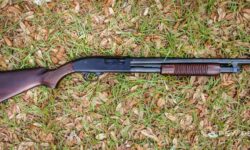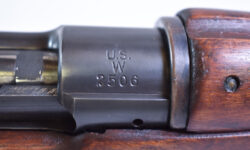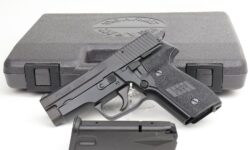WHAT IS A STRIKER-FIRED PISTOL?
If you are looking for a pistol that you can use for home security, self-protection, and kept hidden while carrying, you have rounded up the best. A 9mm Striker-powered pistols are the most reliable and easy-to-use handguns you could ever have. Striker Fired Pistol is one of the most famous pistols on the market at the moment, which is populated by Glock.
This article is the critical review of Striker Fired, which focused on beginners who have little or no knowledge of this pistol and are planning to invest in their first purchase. First of all, make sure that you’re purchasing from a reputable company such as Glock, Springfield Armory, Smith & Wesson all have highly regarded striker-fired pistols.
WHAT IS ACTUALLY A STRIKER-FIRED PISTOL?
[sc name=”amznative” ]Following are the top striker-fired pistols available in the market today.
- CZ P10C
- Glock 17/19
- Heckler & Koch VP9
- SIG Sauer P320
- Smith & Wesson M&P
- Walther P99
- Walther PPQ
How do Striker-Fired Pistols work?
All of the strikers are firing pins; however, not all fire pins are strikers. Striker-powered guns can be characterized as spring-loaded fire pins. Racking the slide or pulling the trigger, or mixing both the cock and the striker cock behind it, is ready with the potential energy of the spring behind it. Once the stimulus is pulled, the spring energy moves forward. Then the striker hits the primer that ignites the gun powder, and so on. Striker’s pistols are not all the same, they function under various systems, but the only thing they all have in familiar is the lack of a hammer.
Detailed Method
The gun powder inside the casing must be ignited to propel a bullet with its cartridge. There are two slightly different ways for centerfire and rimfire rounds to do this. On the back end of the shell, both have primers. Centerfire ammunition only features a primer in the center of the cartridge’s back, while the primer spans the entire base of the rimfire round casing. The rear of its casing should be hit with plenty of force to trigger the primer with any form of ammunition, which inhibits the gunpowder blast that eventually accelerates the bullet through the gun barrel from the cartridge.
The striker is the part in a striker-fired handgun that strikes the shell, dimples it, and ignites the primer inside. Glock calls “safe action” their striker-fired method. The three inline safety mechanisms are disconnected when the trigger is pulled, and the striker is pushed back inside the weapon. It raises the voltage on the spring of the firing pin.
If the trigger bar activates the firing pin’s lug, as the firing pin spring relaxes, the striker goes forward. This movement allows the striker in the chamber to impact the round’s base, which shoots around.
Similar variants of this feature are used by manufacturers, including Beretta, Kahr Weapons, and Springfield Armory. For instance, when chambering a round, Springfield’s XD series completely stresses the firing pin spring compared to Glock’s partial tension before the trigger pulls and increases the spring tension.
Striker firing sounds somewhat complicated, but it actually requires fewer components than the older hammer-fired method (which will be the subject of future posts). In the field of concealed carry, there are a few advantages of striker-fired handguns. Second, there is no external hammer, allowing for a system that is more snag-free. It also implies that each trigger pull has the same pull weight, from the first to the final round against the journal. In self-defense cases, some consider the lack of external protection on striker-fired weapons to benefit because it enables the operator to shoot with fewer steps on their assailant.
Advantage of Striker-Fired Pistol
[sc name=”in-content” ]- A strong trigger pull is among the most important benefits of a striker-fired layout. DA/SA striker-fired weapons are very few, and there are even fewer DAO rifles. Most striker-fired weapons give you one continuous trigger pull with a positive reset that is always light and brief.
- Another advantage is that you are least likely to snag on the draw without a hammer, particularly from concealment. Shot Striker weapons are much easier than hammer-fired guns, too. It makes it easily evident by bringing a Glock together versus a CZ. A simpler weapon means that you are more likely to make changes or improvements at home.
I would say that the Glock requires around a third of the time, as someone who has switched both a Glock and a CZ trigger.
- If you favor the trigger device, the only possible drawback is the lack of DA/SA or DAO weapons. A hammer helps you to restrike the round if it declines to fire, but it’s not that big of a benefit with high-quality ammunition.
Are Striker-Fired Pistols reliable?
Striker fire is another ballgame; the first-stroke energy is linear. Striker fire is less complex with fewer parts needed than hammer-fired models, and fewer parts mean reduced weight, but not inherently less maintenance or higher reliability. [sc name=”faq3questions” q1=”What is actually a striker-fired pistol?” a1=”All of the strikers are firing pins; however, not all fire pins are strikers. Striker-powered guns can be characterized as..” q2=”How do Striker-Fired Pistols work?” a2=”The striker hits the primer that ignites the gun powder, and so on. Striker’s pistols are not..” q3=”Advantage of Striker-Fired Pistol” a3=”You are least likely to snag on the draw without a hammer, particularly from..” ]


